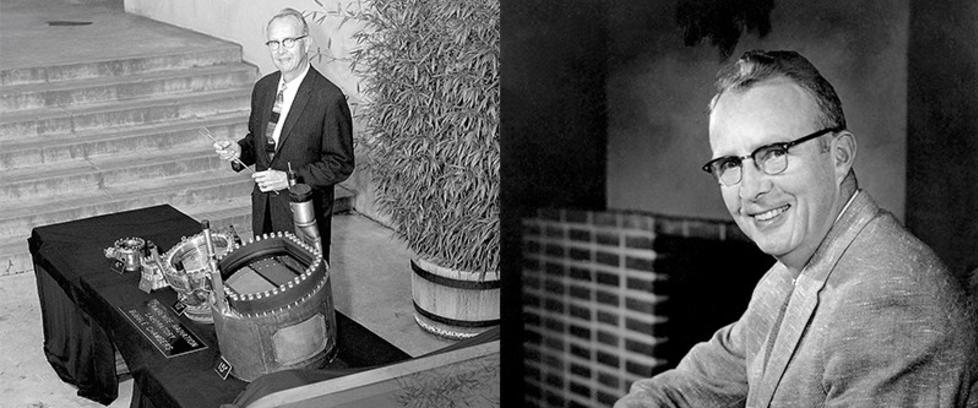
Innovation has always been the foundation of Rochester, MN, and it's an honor to share the stories of some of the city's most amazing innovators. Here are four facts about Luis Alvarez, who went from a graduate of Rochester High in 1928 to a recipient of the Nobel Prize. This trailblazer co-discovered tritium, worked on the Manhattan Project, and came up with the theory that a meteor killed the dinosaurs.
1. Born in 1911 and raised in California, Luis Alvarez moved to Rochester in 1926, when his father, physician Walter Alvarez, took a job at Mayo Clinic. Luis attended Rochester High and graduated in 1928. One of his high school classmates said Alvarez took his math tests with a fountain pen, confident that he’d make no mistakes.
2. Alvarez served as a group leader on the Manhattan Project in Los Alamos, N.M., during World War Two. When the atomic bomb was dropped on Hiroshima, Japan, in 1945, Alvarez watched the explosion from aboard a B-29 that accompanied the bomber, the Enola Gay.
3. In 1968, Alvarez won the Nobel Prize for Physics for “for his decisive contributions to elementary particle physics.” A holder of 22 patents, Alvarez also invented a handheld range finder that allows golfers to measure distances.
4. In the 1970s, his son Walter, a 1962 Carleton grad and geologist, discovered a layer of sediment--estimated to be 65 million years old--enriched with iridium, an element rare on earth but common in meteorites. Luis and Walter theorized that a giant asteroid struck the earth, causing a cloud that led to the extinction of the dinosaurs. The theory is still accepted by many scientists today.
Sources: Post-Bulletin archives, New York Times obituary, Mayo Clinic Proceedings. NobelPrize.org
